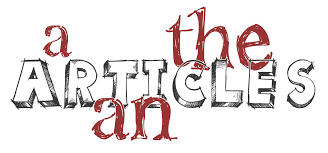Introduction:
The importance of articles in the realm of teaching and learning cannot be overstated. Articles serve as valuable resources for both educators and learners, providing insight into various topics and fostering critical thinking skills. This piece will delve into the significance of incorporating articles in teaching and learning processes, showcasing their diverse benefits and exploring various strategies to effectively engage with them.
Benefits of using articles in education:
1.Exposure to diverse perspectives: Articles often present information and opinions from various perspectives, allowing educators to expose students to a wide range of viewpoints. This helps foster critical thinking skills, as learners are encouraged to engage with different opinions, ultimately forming their own understanding of a subject.
2.Enhancing reading and comprehension skills: Articles challenge students’ reading abilities and require them to actively engage with the material. Repeated exposure to articles enhances learners’ reading comprehension abilities, equipping them with essential skills necessary for future academic success.
3.Keeping current with relevant topics: Articles cover a vast array of subjects, ensuring that both educators and students remain updated on contemporary issues. This instills a sense of curiosity in learners while also permitting educators to create lesson plans that are both dynamic and timely.
4.Encouraging interdisciplinary connections: Articles often tackle complex topics that touch upon multiple disciplines, enabling students to make links between seemingly disparate subjects, thus cultivating a holistic understanding of the world.
Strategies for effectively using articles in teaching and learning:
1.Selecting appropriate material: Educators should carefully choose articles that align with the intended learning outcomes, catering to the interests, abilities, and needs of their students.
2.Activating prior knowledge: Before introducing an article, it can be helpful for educators to tap into students’ existing knowledge on the subject matter. Doing so will better support learners in comprehending the material while generating interest in the topic at hand.
3.Employing active reading strategies: Encourage students to use tools like annotating, summarizing, and questioning while they read. These active reading strategies will propel learners to engage deeply with the article and support skill development.
4.Facilitating group discussion: Post-reading discussions can offer students opportunities to share their thoughts, ideas, and questions about the article. This collaborative approach bolsters learning by triggering in-depth conversation and exploration of the topic.
5.Assessing understanding: Instructors should monitor students’ comprehension by utilizing various methods such as quizzes, oral presentations, written responses, or group projects related to the article content.
Conclusion:
Articles stand as crucial educational tools that significantly impact teaching and learning across disciplines. Embracing them within academic settings enhances overall learning experiences by promoting diverse perspectives, boosting reading comprehension abilities, keeping current with relevant topics, and encouraging interdisciplinary connections. By employing effective strategies for incorporating articles in education, educators can unlock their immense potential as instruments for cultivating engaged and enlightened learners.










